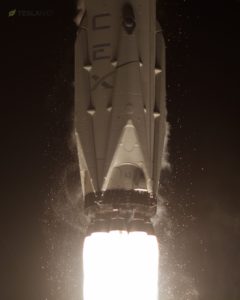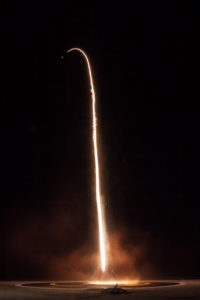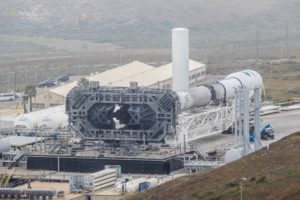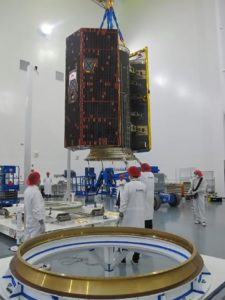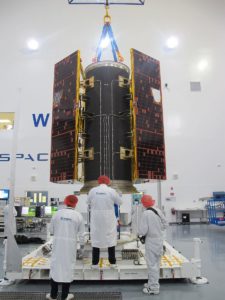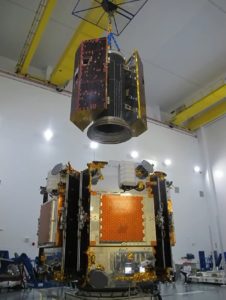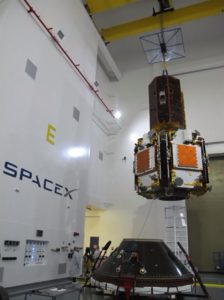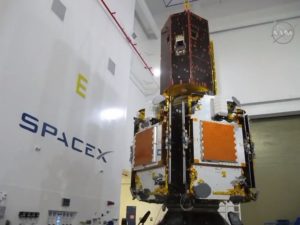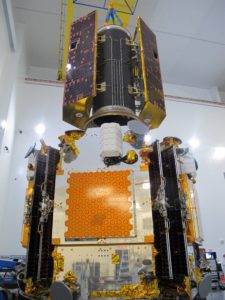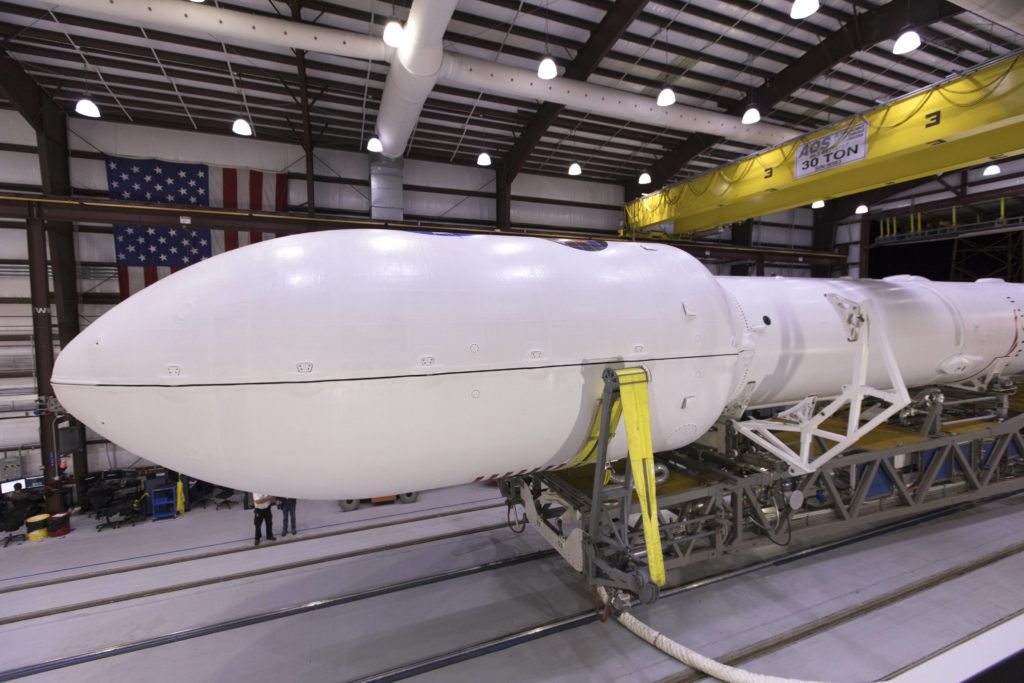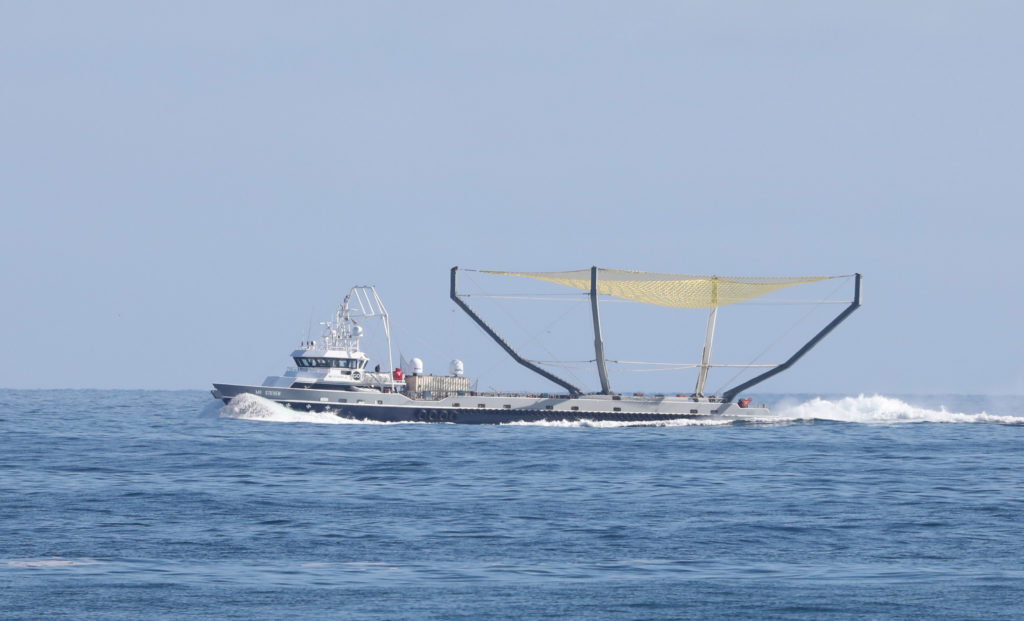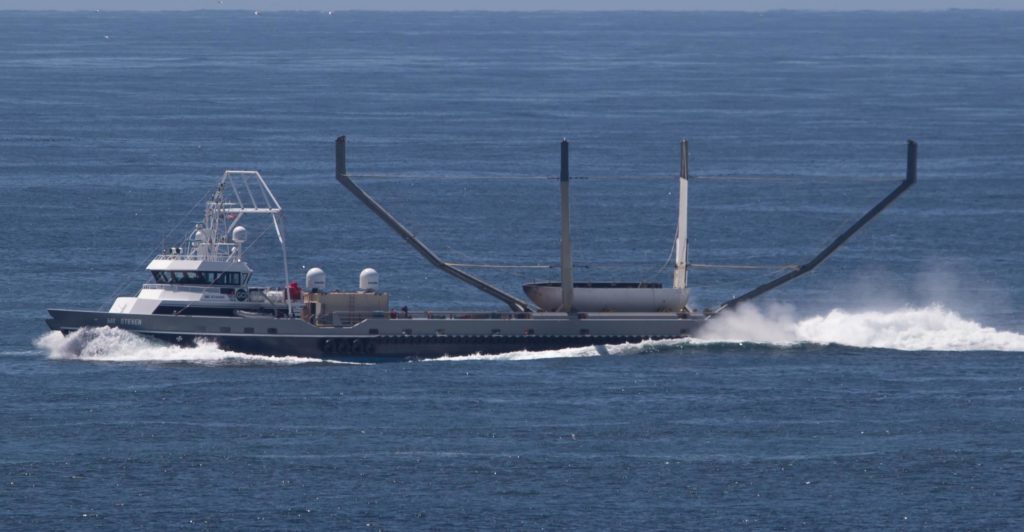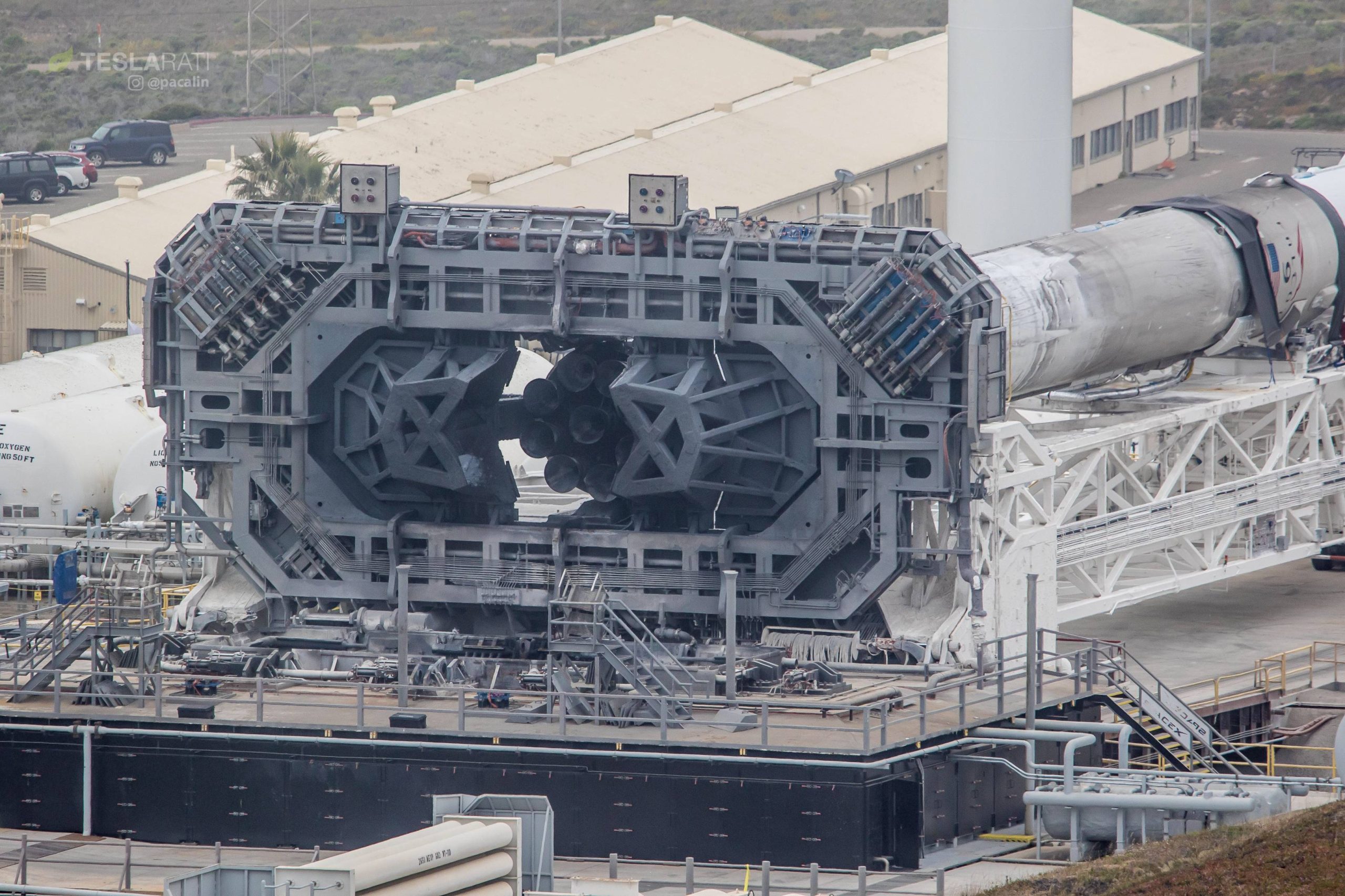
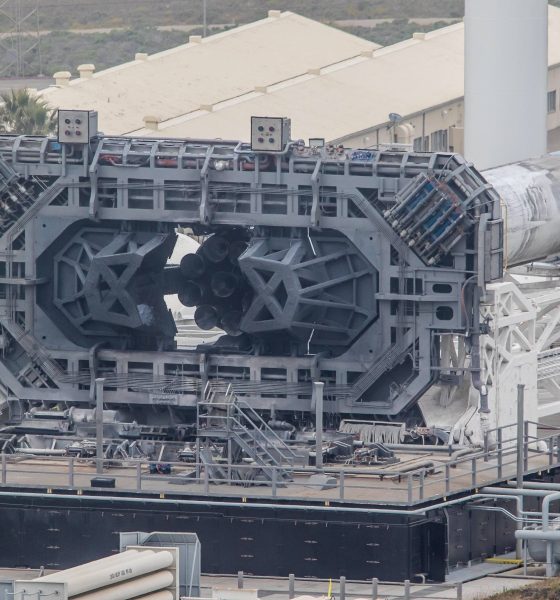
News
SpaceX to launch one of its last old-gen Falcon 9s in upcoming launch
One of SpaceX’s rapidly shrinking fleet of older Falcon 9 launch vehicles has rolled out to the company’s California launch pad ahead of an expendable launch and fairing recovery attempt scheduled for no earlier than Tuesday (NET) 12:47 pm PST/19:47 UTC May 22.
Although SpaceX may have inaugurated a new era of truly reusable rocketry with the debut of Falcon 9 Block 5 earlier this month, there are still a number of older Falcon 9 boosters (all flight-proven) awaiting their second and final flights. At the moment, a minimum of four cores remain, including the sooty Falcon 9 first stage captured earlier this evening by Teslarati photographer Pauline Acalin.
Foreshadowing its imminent watery demise with a lack of landing legs, this particular booster (B1043) previously launched the mysterious and controversial Zuma mission in January 2018, a classified payload claimed (sans convincing evidence) to have failed and reentered Earth’s atmosphere mere hours after reaching orbit. While it’s possible that the mission was a failure, at the moment unsteadily blamed on the failure of a Northrop Grumman-designed payload adapter and deployment mechanism, it’s far more probable that the apparently wildly-expensive satellite is still in orbit.
- Falcon 9 B1043 lifts off for the first time with Zuma on January 7. (Tom Cross/Teslarati)
- After landing at LZ-1, B1043 was refurbished in approximately four months. (SpaceX)
- On May 21, the rocket was rolled out to SLC-4E on the opposite coast of its first launch, ready for one final flight. (Pauline Acalin)
Checking the pulse of Earth’s gravity
Regardless, the same SpaceX rocket booster responsible for lifting Zuma and the Falcon 9 upper stage out of the atmosphere is now ready to launch a new payload at SLC-4E, a launch pad stationed in Vandenberg Air Force Base. B1043’s second orbit-destined payload is a compliment of seven satellites: five are of the Iridium NEXT variety and the remaining satellites make up a scientific mission and technology demonstrator known as GRACE-FO (FO for Follow-On).
- The two GRACE-FO satellites are stacked atop five Iridium NEXT communications satellites. (NASA)
- (NASA)
- (NASA)
- SpaceX is already fairly experienced with launching multi-satellite missions and building custom payload adapters. (NASA)
- A combination of scientific satellites and five Iridium NEXT communications satellites preparing for launch in May 2018. (NASA)
- During a normal Iridium NEXT launch, two groups of five satellites are stacked on top of each other. Here, the top stack was replaced by NASA/DLR’s GRACE-FO spacecraft. (NASA)
Following in the footsteps of the original GRACE’s (Gravity Recovery and Climate Experiment) 15 year orbital tenure, GRACE-FO is effectively the same mission with significantly upgraded hardware – the biggest experimental component is actually an advanced laser interferometer designed to measure the distance between the two satellites (roughly equivalent to the distance between LA and San Diego) with the precision of a single micrometer (10-100x smaller than the width of a human hair). At that level of precision, the pair of satellites can detect minute changes in Earth’s gravity, to the extent that they can actually observe droughts, floods, and ice melt through the change in gravity caused by the movement of large (i.e. heavy) quantities of water. If the experimental laser ranging technology works as intended, it will be at least ten times more accurate than the microwave-ranging technology also installed on the follow-on satellites.
SpaceX’s rocket fleet makes way for Block 5
On the SpaceX side of things, Falcon 9 B1043 will be expended after dutifully completing the launch of Iridium-6/GRACE-FO, although the presence of grid fins on the rocket indicates that SpaceX will likely continue a regime of soft-landing recovery tests to optimize and flesh out the limits of Falcon 9’s capabilities. At first glance, the tradeoff of expending entire rocket boosters able to be (relatively inefficiently) refurbished for considerably more than two flights seems extreme and inadvisable. However, SpaceX is presumably ravenous for data on the survivable envelope of Falcon 9 performance – particularly reuse – in advance of the complete transition to the rocket’s Block 5 iteration, a significant upgrade likely to come hand in hand with a more pronounced aversion to expendable missions given each booster’s design lifespan of 10 to 100 missions. At that level of reusability, expending Falcon 9 Block 5s would truly become comparable with the absurdity of trashing an airliner after one or a handful of flights, an (in)famous talking point used by Elon Musk over his years of public SpaceX discussions.
Thus, if SpaceX can gather data that might enable future Falcon 9 Block 5 recoveries by expending much less valuable Block 3 and 4 boosters, the payoff would be irresistible once examined with a long-term outlook. In the sense that Block 5 may be capable of magnitudes more flights with considerably cheaper refurbishment, the literal elemental value of the hardware – in the likely event that Block 5 production is more capital-intensive than Block 3/4 – is more or less irrelevant for an aversion to expending Block 5 boosters.
Rather, what is lost alongside an expendable Block 5 mission is instead the comparatively vast amount of revenue locked within dozens of additional highly-profitable launches each expended booster could have supported. From that perspective, expending Block 3s and 4s to gather data might be accurately compared to destroying single-pilot Cessnas to improve the utility of a 747 airliner.
After B1043 is expended, only three obvious flightworthy cores will remain outside of the gradually growing Falcon 9 Block 5 fleet (just two boosters, currently). In order of anticipated launch, these three missions are SES-12 (NET May 31), CRS-15 (NET June 28), and the Crew Dragon in-flight abort test (NET Q4 2018). Barring the unexpected refurbishment of an older flight-proven core for a third mission, these final three missions will bring to a close the inherently temporary era of partially-reusable SpaceX rockets – in the words of Elon Musk, Block 5 would thus signify that SpaceX has moved from “the dog that caught the bus” to, perhaps, the dog that caught the bus and then learned how to drive and maintain it. Somewhere in the middle of those final throes of old-guard Falcons will be an ever-increasing cadence of Block 5 launches and re-launches, likely including the first manifest-necessitated reuse of a Block 5 booster sometime this summer.
- Falcon 9 B1045 shows off its own Fairing 2.0 ahead of the launch of TESS. (NASA)
- Chuck Bennett captured Mr Steven conducting high-speed maneuvers with its new, yellow net installed, May 17. (Charles Bennett/@chuckbennett)
- Not nearly enough net, as it turned out. (Pauline Acalin, May 2018)
Meanwhile, despite the sealed fate of the rocket’s booster, tomorrow’s launch will debut fairing-catcher Mr Steven’s new and improved net. With the introduction of an upgraded net and what can only be described as back-to-back days of relentless ocean-going practice over the last two weeks, it’s entirely possible that Iridium-6/GRACE-FO will be able to lay claim to the first successful catch of a payload fairing following an orbital rocket launch. Fingers crossed.
Follow the mission live on SpaceX’s webcast at 12:30 pm PST on Tuesday, May 22, and make sure to check back at Teslarati over the course of the week as photographer Pauline Acalin covers Mr Steven’s return to Port of San Pedro.
Follow us for live updates, behind-the-scenes sneak peeks, and a sea of beautiful photos from our East and West coast photographers.
Teslarati – Instagram – Twitter
Tom Cross – Twitter
Pauline Acalin – Twitter
Eric Ralph – Twitter

Elon Musk
GM CEO Mary Barra says she told Biden to give Tesla and Musk EV credit
“He was crediting me, and I said, ‘Actually, I think a lot of that credit goes to Elon and Tesla…You know me, Andrew. I don’t want to take credit for things.”
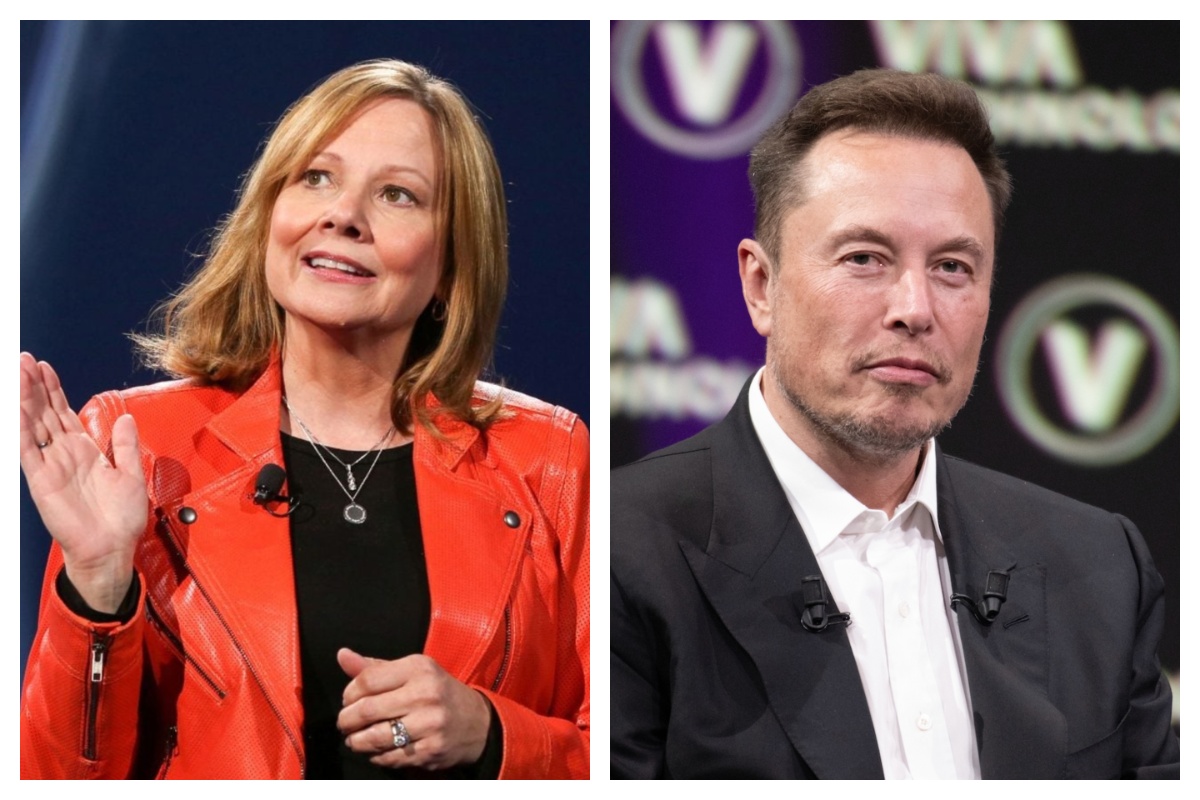
General Motors CEO Mary Barra said in a new interview on Wednesday that she told President Joe Biden to credit Tesla and its CEO, Elon Musk, for the widespread electric vehicle transition.
She said she told Biden this after the former President credited her and GM for leading EV efforts in the United States.
During an interview at the New York Times Dealbook Summit with Andrew Ross Sorkin, Barra said she told Biden that crediting her was essentially a mistake, and that Musk and Tesla should have been explicitly mentioned (via Business Insider):
“He was crediting me, and I said, ‘Actually, I think a lot of that credit goes to Elon and Tesla…You know me, Andrew. I don’t want to take credit for things.”
GM CEO Mary Barra said to Andrew Sorkin at the New York Times Dealbook Summit that she pulled President Biden aside and said Tesla CEO @elonmusk deserved the credit for EVs:
“He was crediting me, and I said, ‘Actually, I think a lot of that credit goes to Elon and Tesla,’” Barra… pic.twitter.com/OHBTG1QfbJ
— TESLARATI (@Teslarati) December 3, 2025
Back in 2021, President Biden visited GM’s “Factory Zero” plant in Detroit, which was the centerpiece of the company’s massive transition to EVs. The former President went on to discuss the EV industry, and claimed that GM and Barra were the true leaders who caused the change:
“In the auto industry, Detroit is leading the world in electric vehicles. You know how critical it is? Mary, I remember talking to you way back in January about the need for America to lead in electric vehicles. I can remember your dramatic announcement that by 2035, GM would be 100% electric. You changed the whole story, Mary. You did, Mary. You electrified the entire automotive industry. I’m serious. You led, and it matters.”
People were baffled by the President’s decision to highlight GM and Barra, and not Tesla and Musk, who truly started the transition to EVs. GM, Ford, and many other companies only followed in the footsteps of Tesla after it started to take market share from them.
Elon Musk and Tesla try to save legacy automakers from Déjà vu
Musk would eventually go on to talk about Biden’s words later on:
“They have so much power over the White House that they can exclude Tesla from an EV Summit. And, in case the first thing, in case that wasn’t enough, then you have President Biden with Mary Barra at a subsequent event, congratulating Mary for having led the EV revolution.”
In Q4 2021, which was shortly after Biden’s comments, Tesla delivered 300,000 EVs. GM delivered just 26.
News
Tesla Full Self-Driving shows confident navigation in heavy snow
So far, from what we’ve seen, snow has not been a huge issue for the most recent Full Self-Driving release. It seems to be acting confidently and handling even snow-covered roads with relative ease.

Tesla Full Self-Driving is getting its first taste of Winter weather for late 2025, as snow is starting to fall all across the United States.
The suite has been vastly improved after Tesla released v14 to many owners with capable hardware, and driving performance, along with overall behavior, has really been something to admire. This is by far the best version of FSD Tesla has ever released, and although there are a handful of regressions with each subsequent release, they are usually cleared up within a week or two.
Tesla is releasing a modified version of FSD v14 for Hardware 3 owners: here’s when
However, adverse weather conditions are something that Tesla will have to confront, as heavy rain, snow, and other interesting situations are bound to occur. In order for the vehicles to be fully autonomous, they will have to go through these scenarios safely and accurately.
One big issue I’ve had, especially in heavy rain, is that the camera vision might be obstructed, which will display messages that certain features’ performance might be degraded.
So far, from what we’ve seen, snow has not been a huge issue for the most recent Full Self-Driving release. It seems to be acting confidently and handling even snow-covered roads with relative ease:
FSD 14.1.4 snow storm Ontario Canada pic.twitter.com/jwK1dLYT0w
— Everything AI (@mrteslaspace) November 17, 2025
I found the steepest, unplowed hill in my area and tested the following:
• FSD 14.2.1 on summer tires
• FSD 14.2.1 on winter tires
• Manual drivingBut I think the most impressive part was how FSD went DOWN the hill. FSD in the snow is sublime $TSLA pic.twitter.com/YMcN7Br3PU
— Dillon Loomis (@DillonLoomis) December 2, 2025
Well.. I couldn’t let the boys have all the fun!
Threw the GoPro up and decided to FSD v14.2.1 in the snow. Roads were not compacted like the other day, a little slippery, but overall doable at lower speeds. Enjoy the video and holiday music 🎶
Liked:
Took turns super slow… pic.twitter.com/rIAIeh3Zu3— 🦋Diana🦋 (@99_Colorado) December 3, 2025
Moving into the winter months, it will be very interesting to see how FSD handles even more concerning conditions, especially with black ice, freezing rain and snow mix, and other things that happen during colder conditions.
We are excited to test it ourselves, but I am waiting for heavy snowfall to make it to Pennsylvania so I can truly push it to the limit.
News
Tesla hosts Rome Mayor for first Italian FSD Supervised road demo
The event marked the first time an Italian mayor tested the advanced driver-assistance system in person in Rome’s urban streets.
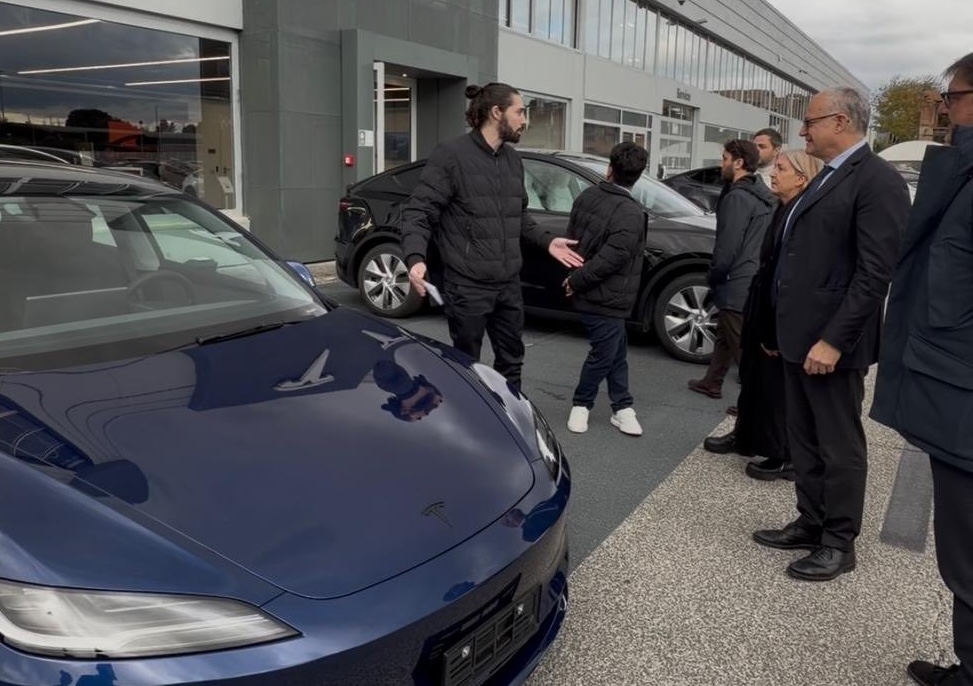
Tesla definitely seems to be actively engaging European officials on FSD’s capabilities, with the company hosting Rome Mayor Roberto Gualtieri and Mobility Assessor Eugenio Patanè for a hands-on road demonstration.
The event marked the first time an Italian mayor tested the advanced driver-assistance system in person in Rome’s urban streets. This comes amid Tesla’s push for FSD’s EU regulatory approvals in the coming year.
Rome officials experience FSD Supervised
Tesla conducted the demo using a Model 3 equipped with Full Self-Driving (Supervised), tackling typical Roman traffic including complex intersections, roundabouts, pedestrian crossings and mixed users like cars, bikes and scooters.
The system showcased AI-based assisted driving, prioritizing safety while maintaining flow. FSD also handled overtakes and lane decisions, though with constant driver supervision.
Investor Andrea Stroppa detailed the event on X, noting the system’s potential to reduce severe collision risks by up to seven times compared to traditional driving, based on Tesla’s data from billions of global fleet miles. The session highlighted FSD’s role as an assistance tool in its Supervised form, not a replacement, with the driver fully responsible at all times.
Path to European rollout
Tesla has logged over 1 million kilometers of testing across 17 European countries, including Italy, to refine FSD for local conditions. The fact that Rome officials personally tested FSD Supervised bodes well for the program’s approval, as it suggests that key individuals are closely watching Tesla’s efforts and innovations.
Assessor Patanè also highlighted the administration’s interest in technologies that boost road safety and urban travel quality, viewing them as aids for both private and public transport while respecting rules.
Replies on X urged involving Italy’s Transport Ministry to speed approvals, with one user noting, “Great idea to involve the mayor! It would be necessary to involve components of the Ministry of Transport and the government as soon as possible: it’s they who can accelerate the approval of FSD in Italy.”
